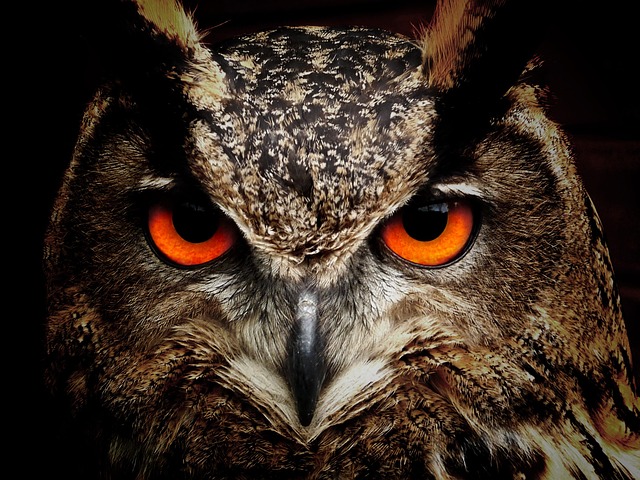Birds have long been associated with symbolism and folklore, often representing freedom, peace, and communication. Throughout history, there have been various beliefs and myths surrounding the idea of birds carrying messages. In this article, we will explore the question: Do birds bring messages?
Table of Contents
The Symbolism of Birds as Messengers in Different Cultures
Do birds bring messages? This is a question that has intrigued humans for centuries. Throughout history, birds have been seen as messengers in various cultures around the world. From ancient times to the present day, these winged creatures have held a special place in our collective imagination.
In many cultures, birds are believed to have a direct line of communication with the divine. They are seen as intermediaries between the earthly realm and the spiritual realm. For example, in ancient Greek mythology, the goddess Iris was often depicted with wings, symbolizing her ability to carry messages from the gods to humans. Similarly, in Norse mythology, the god Odin had two ravens, Huginn and Muninn, who would fly around the world and bring him information.
Birds have also been associated with specific meanings and symbolism in different cultures. For instance, in Native American cultures, the eagle is considered a sacred bird and is believed to carry prayers to the heavens. The eagle’s ability to soar high in the sky represents a connection to the divine and a higher perspective on life. In Chinese culture, the crane is seen as a symbol of longevity and good fortune. It is believed that if a crane visits your home, it brings blessings and prosperity.
In addition to their spiritual significance, birds have also been seen as messengers in more practical ways. In ancient times, before the invention of modern communication methods, people would often rely on birds to deliver messages over long distances. Homing pigeons, for example, were used as messengers during times of war. These birds were trained to fly back to their home base with important information, allowing military commanders to communicate with their troops.
Even today, birds continue to capture our imagination as messengers. In popular culture, we often see birds depicted as messengers of love. The image of a dove carrying an olive branch is a universal symbol of peace and reconciliation. In literature and poetry, birds are often used as metaphors for freedom and escape. They represent the longing for a simpler, more carefree existence.
So, do birds really bring messages? While we may never know for sure, the symbolism and cultural significance of birds as messengers cannot be denied. Whether it is their ability to connect us to the divine, their practical role in delivering messages, or their representation in art and literature, birds have a unique and enduring place in our collective consciousness.
Next time you see a bird soaring through the sky or perched on a branch, take a moment to appreciate the beauty and mystery they represent. Perhaps they are carrying a message just for you, or maybe they are simply reminding us of the wonder and magic that exists in the world around us.
The Historical Significance of Carrier Pigeons in Communication

Do birds bring messages? It may sound like something out of a fairy tale, but in fact, there is a long history of birds being used as messengers. One of the most famous examples of this is the carrier pigeon. These remarkable birds have been used for centuries to deliver messages across long distances. Let’s take a closer look at the historical significance of carrier pigeons in communication.
Carrier pigeons, also known as homing pigeons, have a natural ability to find their way back to their home or “loft” from great distances. This unique skill made them the perfect messengers in times when other forms of communication were limited or unreliable. The use of carrier pigeons can be traced back to ancient civilizations such as the Egyptians and Persians, who used them to send messages during times of war.
During the World Wars, carrier pigeons played a crucial role in military communication. They were used by both sides to send important messages across enemy lines. These brave birds would carry small capsules containing the messages, which were then attached to their legs or placed in a small container strapped to their bodies. They would then be released and would fly back to their home base, delivering the message to their intended recipient.
One of the most famous carrier pigeons of all time is Cher Ami. During World War I, Cher Ami was used by the American Expeditionary Forces in France to deliver messages from the front lines. In one particularly heroic act, Cher Ami delivered a message that saved the lives of nearly 200 American soldiers who were trapped behind enemy lines. Despite being shot and injured, Cher Ami managed to complete her mission and bring back help for the stranded soldiers.
The use of carrier pigeons declined with the advent of more advanced forms of communication, such as telegraphs and radios. However, they still found occasional use in certain situations where other methods were not available. For example, during the Second World War, carrier pigeons were used by resistance fighters in Europe to send messages to the Allies. These messages were often of vital importance, as they contained information about enemy movements and plans.
Today, carrier pigeons are mostly used for recreational purposes, such as racing and pigeon shows. However, their historical significance in communication should not be forgotten. These birds played a crucial role in times when communication was difficult or dangerous. They were reliable, fast, and could navigate through even the most treacherous conditions.
In conclusion, while birds may not bring messages in the same way as they do in fairy tales, carrier pigeons have a long and storied history as messengers. From ancient civilizations to the World Wars, these remarkable birds have played a crucial role in communication. Their ability to find their way home from great distances made them the perfect messengers in times when other forms of communication were limited or unreliable. While their use has declined in modern times, their historical significance should not be forgotten. Carrier pigeons are a testament to the ingenuity and resourcefulness of humans in finding ways to communicate across long distances.
The Role of Birds in Literature and Folklore as Conveyors of Messages
Do birds bring messages? This is a question that has intrigued humans for centuries. Throughout literature and folklore, birds have often been portrayed as conveyors of messages, whether it be from one person to another or from the divine to the mortal realm. Their ability to fly high in the sky and traverse great distances has made them a symbol of communication and connection.
In many ancient cultures, birds were believed to have a special connection to the gods. They were seen as messengers, carrying important information from the divine realm to humans. For example, in Greek mythology, the goddess Athena often sent her owl as a messenger to deliver wisdom and guidance. Similarly, in Norse mythology, the god Odin had two ravens, Huginn and Muninn, who would fly across the world and bring back news and information to him.
Birds have also played a significant role in religious texts. In the Bible, for instance, the dove is a symbol of peace and hope. It was a dove that brought an olive branch to Noah, signaling the end of the great flood. In Christianity, the Holy Spirit is often depicted as a dove, representing divine communication and guidance.
In literature, birds have been used as a metaphor for communication and freedom. They are often portrayed as messengers of love, carrying letters and tokens of affection between lovers. In Shakespeare’s play Romeo and Juliet, for example, Romeo compares Juliet to the sun and says, “It is the east, and Juliet is the sun. Arise, fair sun, and kill the envious moon, who is already sick and pale with grief, that thou, her maid, art far more fair than she.” Here, Romeo uses the image of the sun and the moon to convey his love for Juliet, comparing her beauty to the brightness of the sun.
Birds have also been used to convey messages of warning or impending danger. In Edgar Allan Poe’s famous poem “The Raven,” the raven itself becomes a symbol of death and despair. The repeated refrain of “nevermore” serves as a haunting reminder of the narrator’s grief and loss. The raven’s presence in the poem is a constant reminder of the message it brings, a message that cannot be escaped.
In folklore, birds have often been associated with omens and superstitions. For example, seeing a blackbird is believed to be a sign of impending bad luck, while a robin is seen as a symbol of good fortune. These beliefs have been passed down through generations, and even today, many people still hold onto these superstitions.
So, do birds bring messages? While it may be tempting to believe in the mystical powers of birds, it is important to remember that they are creatures of nature, bound by their instincts and behaviors. However, the symbolism and metaphorical significance of birds in literature and folklore cannot be denied. They have become powerful symbols of communication, connection, and the human desire for meaning and understanding. Whether it is a message from the divine or a metaphorical expression of love or warning, birds continue to captivate our imaginations and remind us of the power of communication.
The Science Behind Avian Communication and its Relation to Human Perception
Do birds bring messages? It’s a question that has intrigued humans for centuries. From ancient folklore to modern-day superstitions, birds have long been associated with delivering messages from the divine or the spirit world. But is there any scientific basis to these beliefs? Let’s delve into the fascinating world of avian communication and its relation to human perception.
Birds are known for their remarkable ability to communicate with each other. They use a variety of vocalizations, such as songs, calls, and even mimicry, to convey messages within their own species. These vocalizations serve multiple purposes, including attracting mates, defending territories, and warning others of potential dangers. But can birds communicate with humans in the same way?
While birds may not be delivering messages from a higher power, they do have the ability to capture our attention and evoke emotions through their songs. Many bird species have complex and melodious songs that can be pleasing to the human ear. In fact, some people find bird songs to be incredibly soothing and even use them as a form of relaxation therapy. So, in a way, birds can communicate with us on an emotional level, even if we don’t understand the specific messages they are conveying.
But what about the idea of birds bringing messages from the spirit world? Is there any scientific evidence to support this belief? The short answer is no. There is no scientific evidence to suggest that birds have any supernatural abilities or that they can act as messengers between humans and the spirit world. However, it’s important to note that beliefs and superstitions are deeply ingrained in human culture and can be powerful forces in shaping our perceptions and interpretations of the world around us.
In addition to their vocalizations, birds also communicate through visual displays. Many bird species have elaborate courtship displays, where males show off their vibrant plumage or perform intricate dances to attract a mate. These displays are not only visually stunning but also serve as a form of communication within the bird community. While humans may not fully understand the messages being conveyed, we can still appreciate the beauty and complexity of these displays.
It’s also worth mentioning that birds have been used as messengers throughout history, particularly in times of war. Pigeons, in particular, have been trained to carry messages across long distances, often in dangerous conditions. Their remarkable navigational abilities and homing instincts make them ideal messengers. However, it’s important to note that this is a human-imposed use of birds and not a natural form of communication for them.
In conclusion, while birds may not bring messages from the divine or the spirit world, they do have the ability to communicate with us on an emotional level through their songs and visual displays. Their remarkable vocalizations and intricate courtship displays can capture our attention and evoke a range of emotions. While there is no scientific evidence to support the idea of birds as messengers, it’s important to respect the cultural beliefs and superstitions that have shaped our perceptions of these fascinating creatures. So, the next time you hear a bird singing or witness a dazzling courtship display, take a moment to appreciate the beauty and complexity of avian communication.
Conclusion
In conclusion, birds do not bring messages.
For licensing reasons, we must provide the following notice: This content was created in part with the help of an AI.


